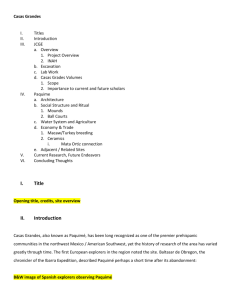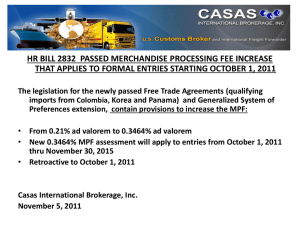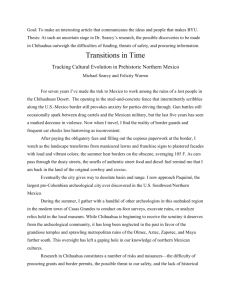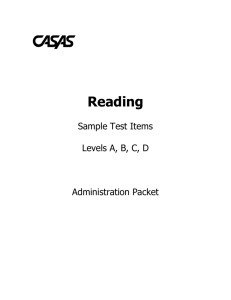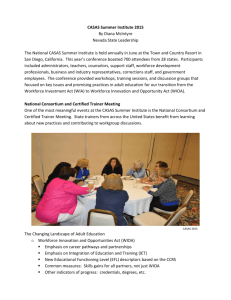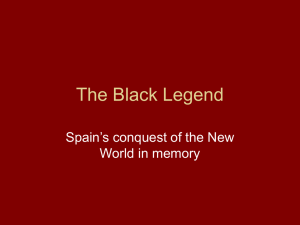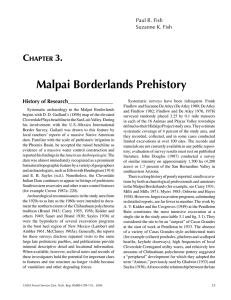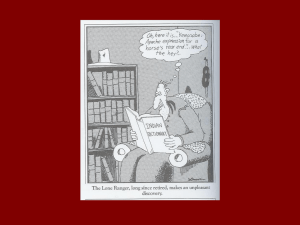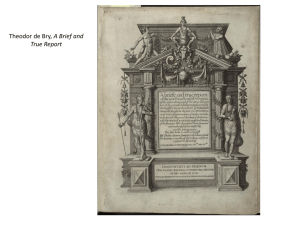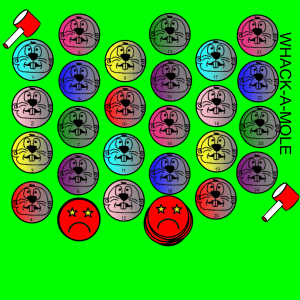paquime
advertisement
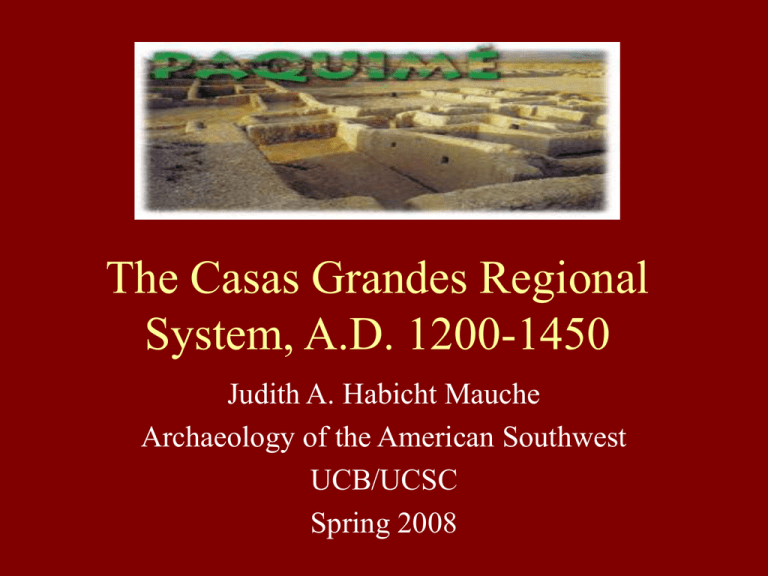
The Casas Grandes Regional System, A.D. 1200-1450 Judith A. Habicht Mauche Archaeology of the American Southwest UCB/UCSC Spring 2008 The Casas Grandes Region Natural Setting and Environment • High basin-and-range topography • Wide, flat, fertile valley • Chihuahua desert shrub and grassland Farming • Sierras--dry farming on terraces-Trincheras – View of Cerro de Trincheras, Sonora • Playa Basins--flood water farming Joint Casas Grandes Project Amerind Foundation and INAH Charles Di Peso (1958-1961) *excavated western portion of site and several other sites in the Casas Grandes area. Other Major Research Projects • Paul Minnis and Michael Whalen – Regional Survey – Early 1990s – Publication in 2001: Casas Grandes and its Hinterland (U of A Press) • Archaeology of North Mexico Project – Joint project of INAH/UNM/MNM – Robert Leonard (UNM) and Tim Maxwell (MNM) – Excavations at Galeana Site (Medio Period) • The University of North Florida & University of Missouri Joint Archaeological Field Project to the Casas Grandes Region of Chihuahua, Mexico – Christine and Todd Van Pool et al. (focus to the west of Paquime) Revised Chronology • Dean and Ravesloot (1993) – Estimated ratio of sapwood in squared beams Viejo Period • • • • A.D. 700-1200 Cave sites in mountains Pithouse villages in valley Example: Convento Site – Cluster of large pithouses (12 per phase) – Shift to above ground architecture--single story walled compounds--similar to Classic Hohokam • Evidence of continuity between Viejo and Medio Periods Medio Period • A.D. 1200-1450 • Sierras: cave sites – Granaries • Valleys: – Big sites and small sites – Within 30 km of Paquimé--three-tier hierarchical settlement pattern Medio Period Cliff Dwellings Paquime--Medio Period • Buena Fe Phase – Single story adobe rooms clustered around walled courtyards (342 rooms) – 20 courtyard groups – Sq. column-fronted galleries – House of the Serpent-macaw breeding boxes • Paquime Phase – Site completely rebuilt – Large, multi-story residential complexes – Ca. 2000 rooms – Extensive public architecture (3 ballcourts, platform mounds, market?) – Elaborate water system • Walk-in well, reservoir, covered drains – Communal food preparation areas • Diablo Phase – Degeneration, destruction and abandonment by late 15th c. – Public building stopped, public space converted to residential space Craft Specialization and Trade What was Casas Grandes role in mediating the exchange of exotic goods between Mesoamerica and the American Southwest? What role did “prestige goods” and “prestige goods exchange” play in the Casas Grandes Regional System? Ramos Polychrome Effigy Vessels “Flight of the Shaman” after Christine S. VanPool (2002) Non-local Pottery • John Douglas (1992) • Imported ceramics <3% of decorated pottery • Salado Polychrome (AZ)--imported or local copies??--concentrated in one room. • El Paso Polychrome (NM)--represents over 90% of imported decorated ceramics • Different exchange network from shells, turquoise or copper • GENDER?--Women’s vs. Men’s spheres of interaction? Scarlet Macaw Breeding • Birds from Tamaulipas and Oaxaca • For trade w/ SW or local consumption?? • Feathers, costumes-Assoc. with Katsina ritualism?? Shell Working • 4 million pieces excavated • Mostly from two storerooms • Direct acquisition or trade w/ West Mexico • Trade w/ SW--Hohokam vs. Casas Grandes networks (Bradley 2000) Turquoise Copper Metallurgy From West Mexico; mostly for local consumption The Casas Grandes Regional System Distribution of Ballcourts Signaling Towers/Shrines? Cerro Montezuma The Chaco Meridian? (Steve Lekson) North-South Alignment of Chaco, Aztec, Great North Road and Casas Grandes Class Discussion: Interpretive Models The following interpretive models have been used to explain the Casas Grandes Regional System: – The Pochteca Model (Di Peso) – Prestige Exchange Model (Bradley) – Peer Polity Interaction and Competition (Minnis and Whalen) – Chaco Migration Model (Lekson) Describe the major characteristics and assumptions of each model. What evidence supports or contests each model? Which model or combination of models do you find most convincing and why?

